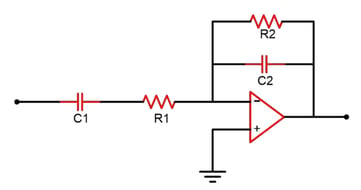Surveillance and reconnaissance, covert operations, space exploration. These aren't simply sci-fi...
Bandpass Filter Transfer Functions: Understanding Their Significance
.png)
Bandpass filters play a pivotal role in a range of applications – from military and defense to everyday technologies like radios and home Wi-Fi setups. Simply put, these devices filter specific frequency ranges to pass while blocking others. As we become more dependent on complex electronic systems, understanding the characteristics of bandpass filters – specifically their transfer function – is crucial.
Bandpass filters are everywhere, but they're especially critical in sectors like military communications and aerospace technology. However, it's not just the filter itself that's important; it's also understanding its "transfer function."
In this article, we'll unpack what a bandpass filter transfer function is, dive into real-world applications, and evaluate the why and when an engineer requires RF filter customization.
What is a Bandpass Filter Transfer Function?
So, what is a bandpass filter transfer function? The transfer function of a bandpass filter defines how the amplitude and phase of input frequencies are modified by the filter.
The transfer function can be formally expressed through mathematical equations. These equations connect the input and output voltage or current and can be portrayed using various notations. Whether you're looking at it in terms of voltage gain, power gain, or the complex frequency response, the essence remains the same. You're quantifying how the filter modifies both the amplitude (or magnitude) and the phase of the input signal at differing frequencies.

A derivation of a second-order band pass filter transfer function. Source: Electrical 4 U
The bandpass filter transfer function isn't merely an exercise in theoretical mathematics. The math simply allows us to analyze filter behavior and design filters with ultra-specific characteristics. Armed with this knowledge, you can make choices about what filter you need.
Real-world Applications of Bandpass Filters
Audio Applications: In real-world scenarios, bandpass filters are highly valued. In audio processing, they ensure sound signals maintain their integrity while unwanted noise is filtered out. They are also versatile, capable of being tailored for high-pass, low-pass, or bandpass functions.
Image Processing: In image processing, these filters play a pivotal role in tasks like noise removal and image contrast enhancement, which are critical in industries like medical or radio imaging.
Balancing Complexity and Performance with SWaP-C Criteria
Finding the balance between desired performance and system complexity is a key consideration for RF engineers. The goal is to achieve optimal performance without overburdening your application or heavily increasing the filter cost.
When and Why Engineers Opt for Custom Bandpass Filters
In the world of RF engineering, if a standard filter doesn't meet the requirements of your project, a custom solution is essential. Particularly, in fields like military communication systems, satellite technology, and medical imaging, engineers often grapple with challenges like:
-
- Coping with unique frequency bands
- Addressing stringent selectivity demands
- Accommodating distinctive bandwidth specifications
Standard filters may not align with the specialized needs arising from such circumstances, rendering customization indispensable. It is in these contexts that RF engineers opt for custom bandpass filters.
And when customization is needed, there are many benefits that accompany it. Engineers can make their filters specific enough that their shape and even the packaging is optimized for what they need. This improves their resource utilization, usually leading to an improved cost if there are less materials needed.
Filter designs that are aligned with the objectives and constraints of a project enable engineers to navigate their complex projects. However, while customization offers a spectrum of advantages, it has trade-offs.
Custom bandpass filter designs can mean longer development times, especially if they require thorough testing. Also, customization demands careful attention to different constraints and requirements to achieve a functional new design.
Engineers must carefully balance these considerations with the benefits to ensure a custom solution meets their project goals without compromising performance, cost, and complexity.
Find the Solution for Your Bandpass Filter Needs
In this article, we've dissected what a bandpass filter transfer function is and these filters’ real world applications. So what’s next?
Now, it’s time to find the right component that you need for your project.
If you’re unsure where to start looking for U.S-based manufacturers, Q Microwave has been a leader in the field of bandpass filters for over 25 years. We pride ourselves on not just manufacturing RF filters, but also producing microwave subsystems.
Whether you’re an engineer looking for precision in military communications or a student exploring signal processing, Q Microwave is your go-to source. We invite you to come to us with us for all your bandpass filter needs.
Because in a world filled with noise, everyone could use a good filter.
Get in touch with us today and experience what sets Q Microwave apart in this growing industry!


.jpg?height=200&name=Mastering%20Bandpass%20Filters%20(A%20Guide%20for%20RF%20and%20Electrical%20Engineers%20in%20Military%20and%20Aerospace).jpg)

